This article originally appeared in the May 2023 issue of CONNECT.
Valerie Wonderland (Osaka)
A couple weeks ago, I visited where I used to live in Gifu, Nakatsugawa, for the first time in a year. I stared at this for thirty minutes and cried for ten of them.

I could not tell you why.
I’m living in Osaka now, though it’s my second time in this city. I lived here once before, and I really liked it, but I had to move back to the US for a bit. I promised myself, though, that I would move back to Osaka again because that’s where I wanted to be. I eventually did. I enjoy living the super 狭い one-room apartment life and surviving the psycho cyclist roulette any time I need to go out in the wild.
But before my Osaka reunion, there was Gifu. I needed to find a way to move back to Japan, and the job I secured while in the US to accomplish that placed me in Gifu Prefecture, wherever that is. Miraculously, I was back in the country by December 2020. It wasn’t Osaka, but it was better than the monotony of Pandemic US. I was lucky to get into the country at all, and I would at least be in a position to move to Osaka more easily after the Gifu detour.
My yearning for the 商店街 of なんば and the energy surging throughout the city was immediately interrupted by a thought that recurred just about every day I spent in Gifu: “THESE MOUNTAINS THOUGH.” Whatever Gifu was, I had to admit it had something that なんば didn’t. It wasn’t until living in Gifu that I really looked at and appreciated mountains—their contours, the shadows that the clouds cast on them, and the very simple fact that land can stretch high above you like that. I lived in an area where Ena-san (恵那山), one of the major mountain peaks of the Kiso Mountains (木曽山脈), stands in plain and majestic sight. The view is even better if you take the quick hike up to the top of Naegi Castle Ruins (苗木城跡).

My first weekend living in Nakatsugawa, Gifu, I jumped into my glorified golf cart of a car and buzzed wherever I could get a good view of even more mountains. It was winter, so everything looked dead, but the snow dusting the peaks was lovely.
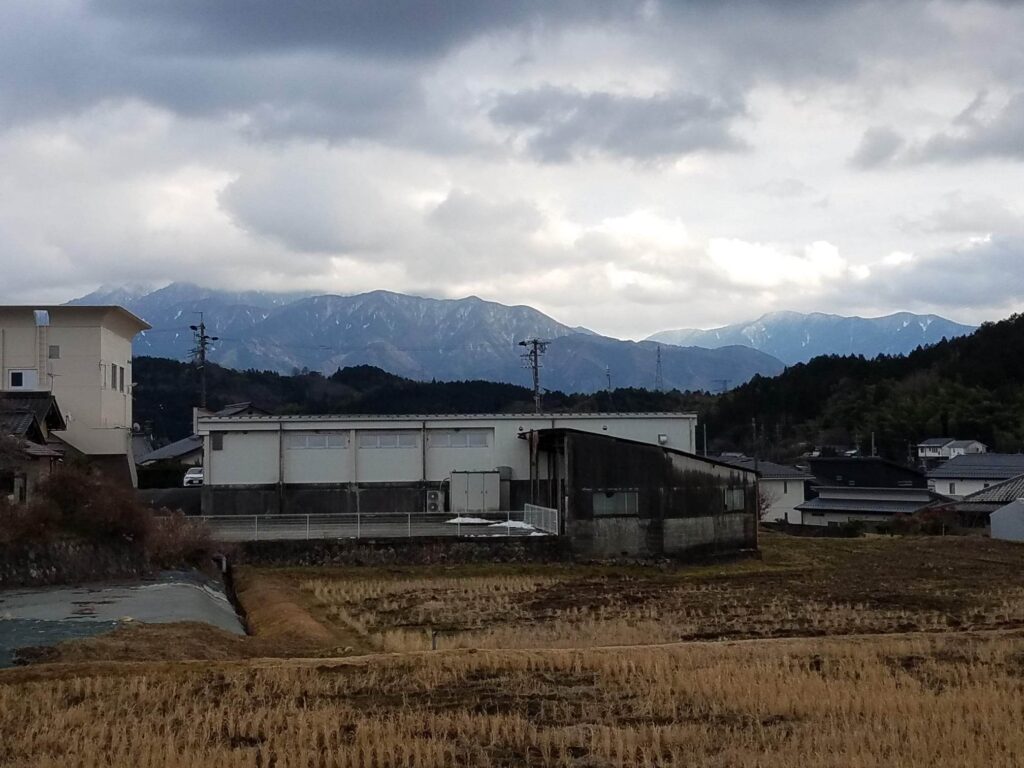
And that wasn’t the last time these mountains would enrapture me. The homies and I would just be cruising up Route 19 on our way home from errands. We’d be in the middle of a conversation that has nothing to do with mountains, and then a big one would emerge. The sun would be in just the right spot to paint the sky some brilliant citrusy sunset. Talking and listening would abruptly halt. “Woooooow.” They must possess some kind of power. Of course they do. They’re massive—giants who tacitly preside over this land now and long after we all perish. Such silence and strength fascinated me.
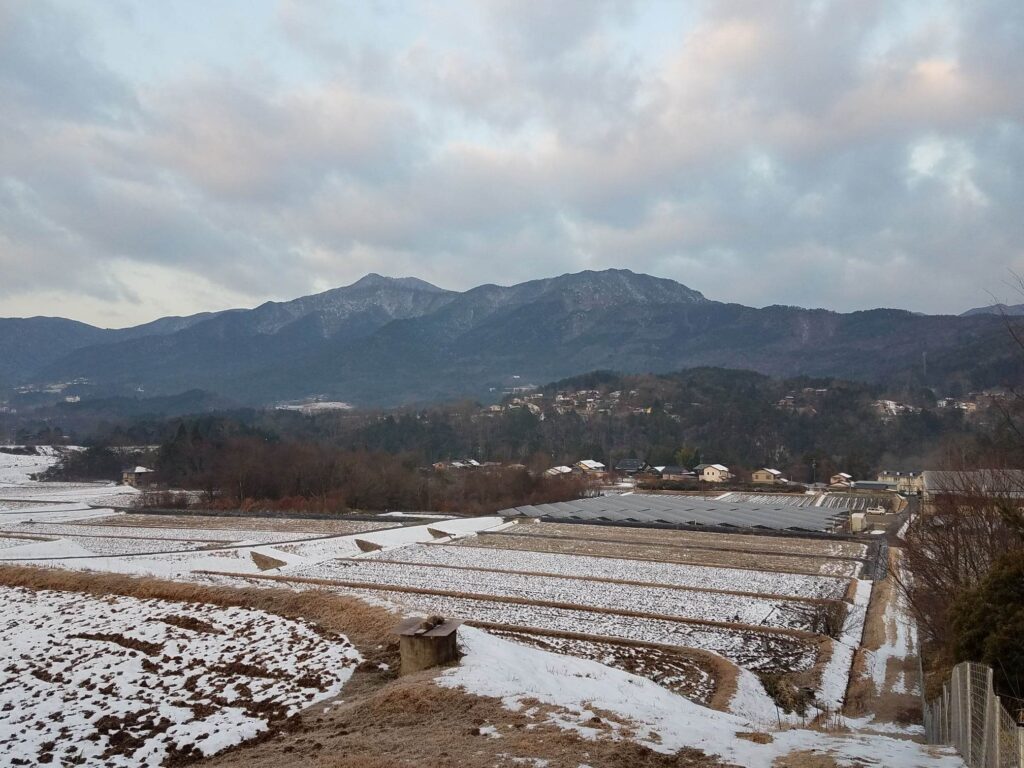
Despite that strength, the Kiso River (木曽川) proved itself a worthy opponent, cleaving a path right through the mountains and my brain while I was thinking about whatever during my morning commute. Taking my eyes off the road to gaze at it while driving was, of course, not safe, so one day, I drove up, stopped my glorified golf cart car somewhere nearby, and walked the rest of the way to the bridges I’d drive over. There were two that I used regularly, the Gyokuzo Bridge (玉蔵橋) and the Shiroyamao Bridge (城山大橋).

That wouldn’t be the last time that the Kiso River would captivate me. Some days the water was high, and on others it was low. Some mornings, fog and mist hung over it. The river coursed so much farther than you can even see, but my eyes tried to follow anyway. The mountains in the distance poked up as if to say hello. I stopped there every season to greet them back. There are no mountains in なんば to say hello.
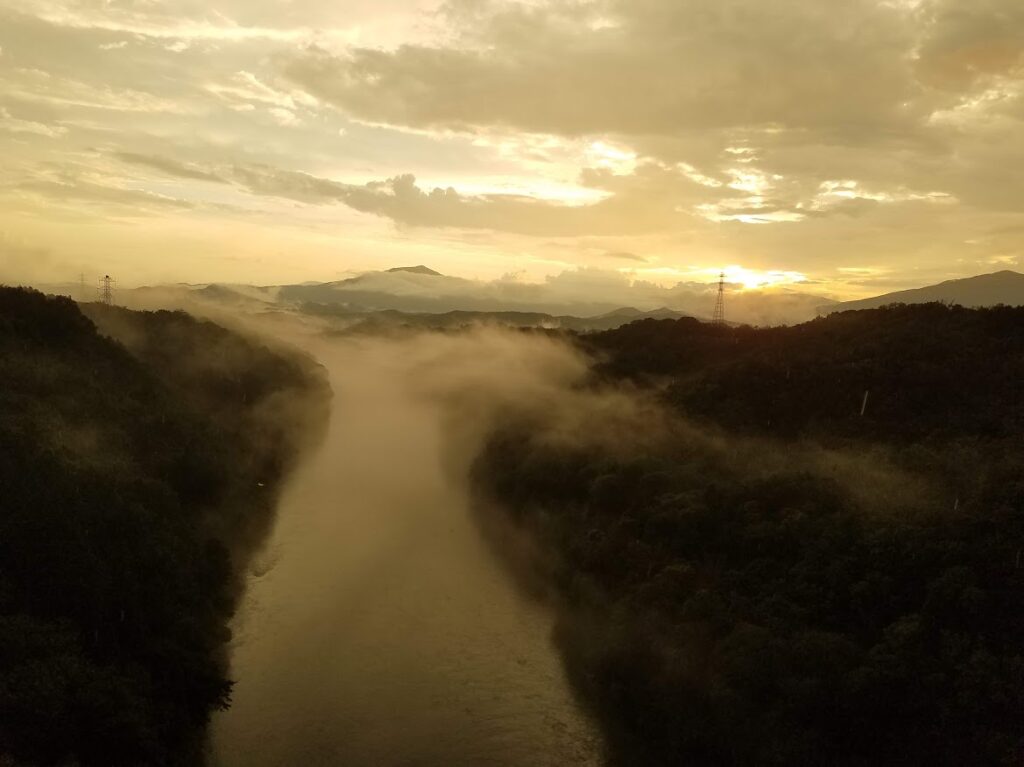
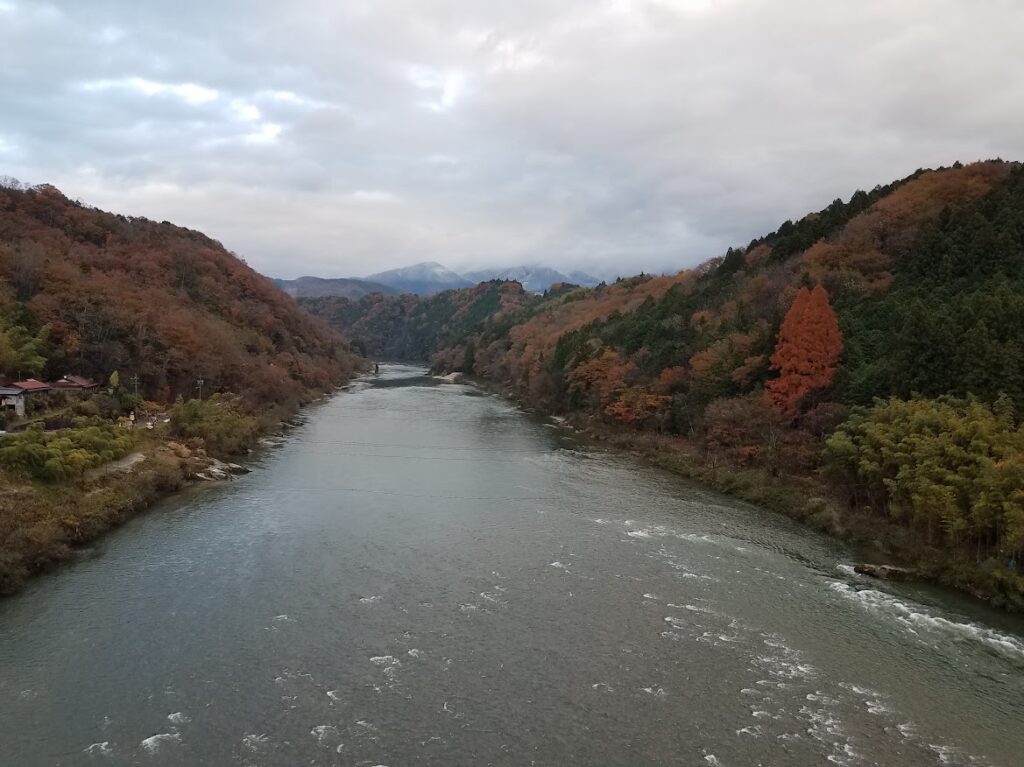
Where I lived in Gifu, I didn’t even have to drive to see something beautiful. Just a stone’s throw from my house was Yotsumegawa Sakura Namiki (四ツ目川桜並木). I like fall leaves in Japan much more than I like sakura and would 10/10 recommend coming to the Chubu Region for the fall, but this is one place I will make a spring spring pilgrimage to every year. I remember when I discovered it. Trees flanked either side of the creek, and just like the Kiso River (though for not nearly as long), it kept going. It was undisturbed, inconspicuous, and brighter than the smile it put on my face.


I walked, and there was nothing else but the sakura and the creek quietly rolling beside me. I walked until I reached what I call the filthy rainbow of Nakatsugawa.
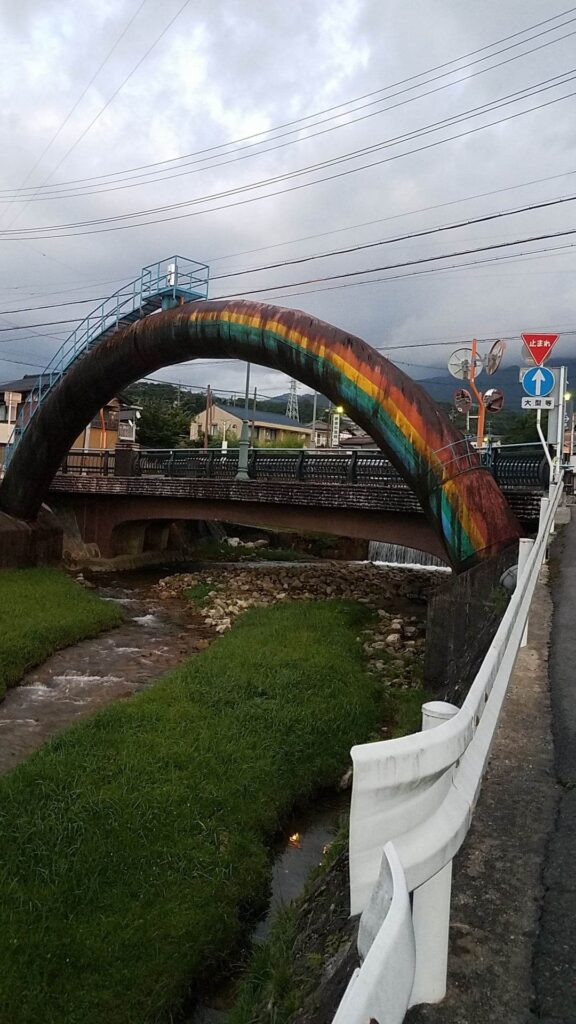
It was dirty, but it was an icon. It wasn’t cleaned the entire time I lived there, and I didn’t even care. That was part of its charm. It wouldn’t be the same filthy rainbow of Nakatsugawa anymore if it were cleaned. Within the past few months, however, it was painted blue, and people were upset about it! I was too! It’s now just a blue arch. It’s still the filthy rainbow of Nakatsugawa in my heart, though.
I went back there just a few weeks ago, drawn back by whatever power the mountains, the river, and sakura of Gifu possessed. The rain was bent on making sure that my entire time there was wet, inconvenient, and disgusting. I would have loved to see the sakura in full bloom on a bright, clear day. However, the weather didn’t ruin it for me. I stared at the Yotsumegawa Sakura Namiki, thinking of nothing else while tears welled up.
Maybe I cried because these places reminded me of how much I changed in Gifu and how I valued that experience. Maybe I simply missed the tranquility. Maybe it’s something I should just accept rather than question. I was crying, but I was okay. I was more than okay. I hope everyone can find a place that can bring them to tears like that. As much as I really wanted to live in Osaka again. As much as I enjoy my life now in Osaka, there’s no place like that here.
Valerie is just a chick who likes to talk about Gifu and benkyo nihongo. She is enthusiastic about Alice’s Adventures in Wonderland, Through the Looking-Glass, and 551 HORAI butaman and wants the world to enjoy them (maybe even at the same time).




